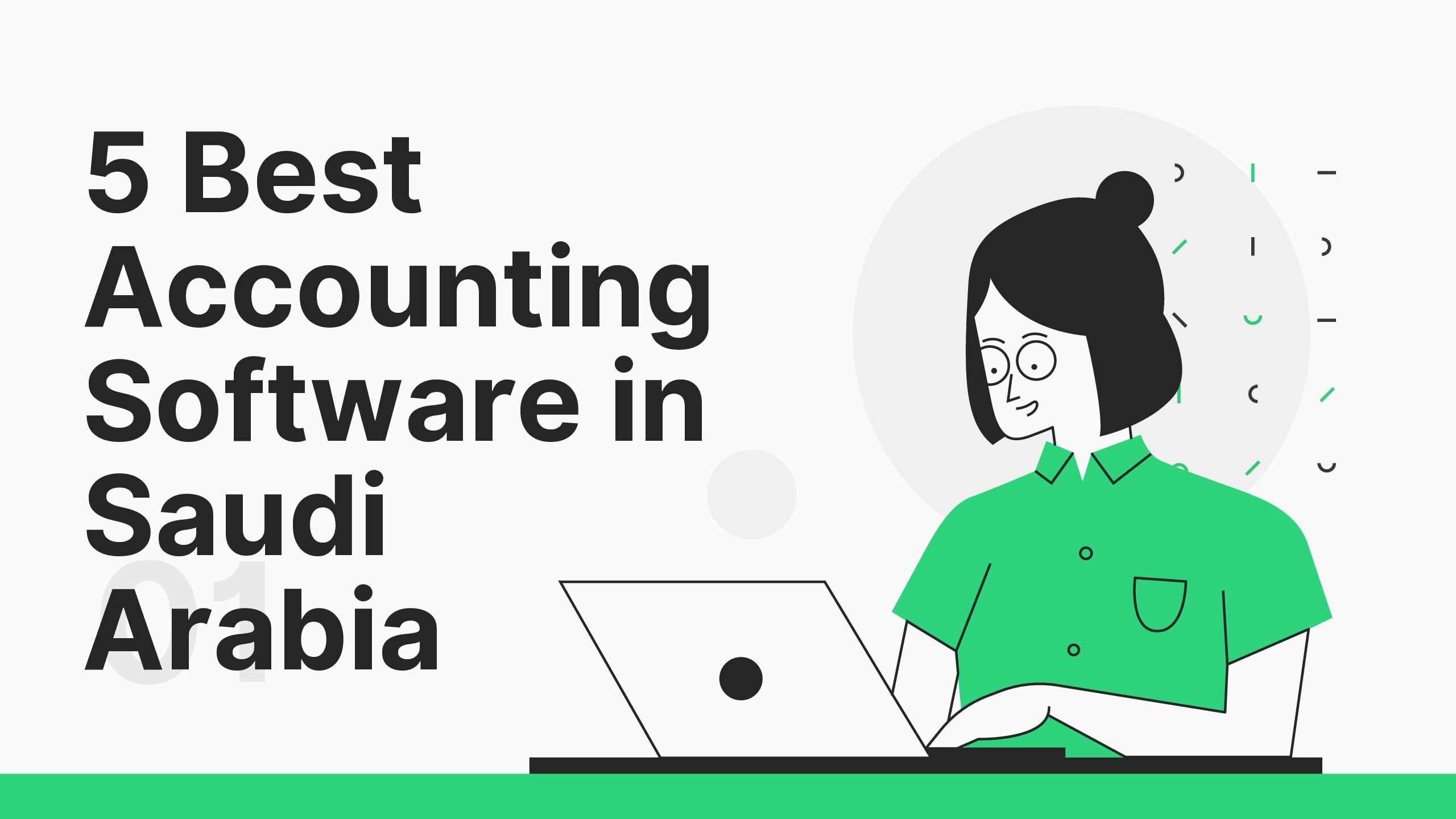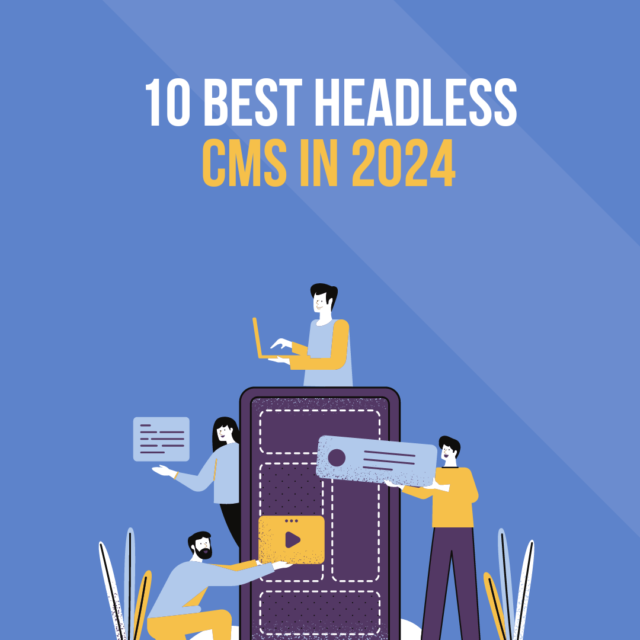In the rapidly evolving digital landscape, the need for dynamic and flexible content delivery has given rise to the popularity of headless content management systems (CMS). Headless CMS platforms offer unparalleled flexibility, allowing businesses to manage and distribute content across a multitude of channels and devices without the constraints of a traditional CMS. As we explore the top 10 best headless CMS platforms for streamlined content management in 2024, it’s important to consider the features that make these platforms stand out. From versatile content modeling to API-first approaches, these headless CMS solutions are redefining how content is managed and delivered.
Key Takeaways
- Headless CMS platforms provide the flexibility to deliver content to various platforms and devices, enhancing omnichannel experiences.
- Content modeling and structured content are key features of headless CMSs, ensuring efficient content organization and consistency.
- An API-first approach is integral to headless CMSs, allowing for seamless integration with other systems and the creation of dynamic user experiences.
- Headless CMS platforms cater to a range of business sizes and needs, with some offering free plans for individual projects and others designed for enterprise-level complexity.
- The separation of content management from the presentation layer in headless CMSs enables greater control over content distribution and customization across multiple channels.
1. Sanity
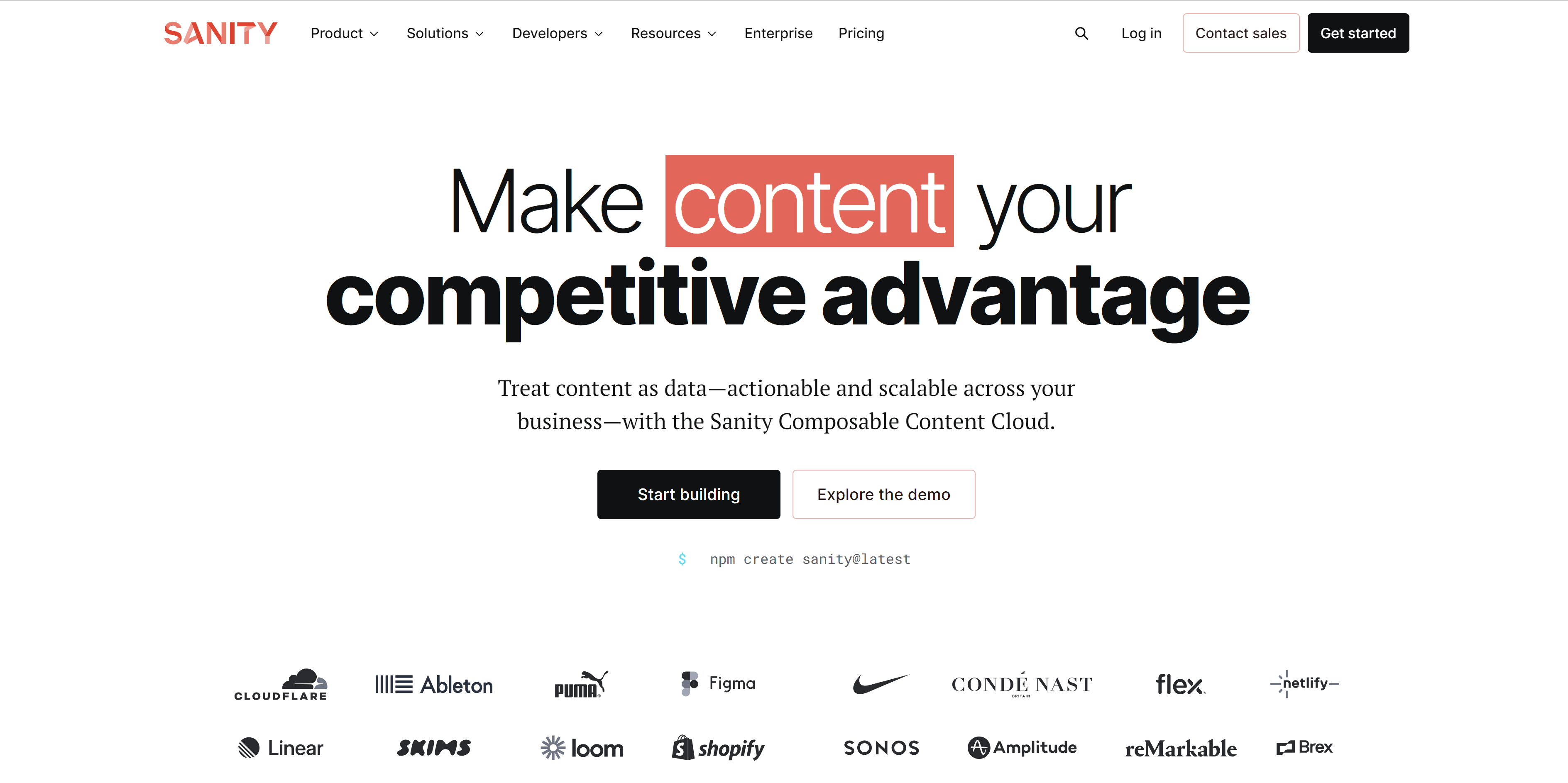
Sanity stands out as an open-source headless CMS that prioritizes customizability and flexibility for developers. By treating content as data, it opens up a world of possibilities for analytics, creation, and distribution, making it a powerful tool for projects that require a unique approach to content management.
Sanity’s real-time collaboration features facilitate seamless teamwork, allowing marketers and developers to work together efficiently. The platform’s extensive integrations ensure that content can be easily transferred to any application, enhancing its versatility.
While Sanity offers a rich set of developer-centric features, it may have a steeper learning curve for beginners compared to more structured CMS platforms like Prismic.
Sanity’s best features include:
- Direct integrations with static site generators for easy content module management
- Dynamic content preview capabilities for seamless frontend delivery
- Cloud-native architecture enabling content management from any location
- Advanced data analytics tools to continually refine content strategies
However, the deep customization options that make Sanity so powerful can also make it less intuitive for non-technical users, especially when compared to simpler solutions like WordPress VIP.
2. Strapi
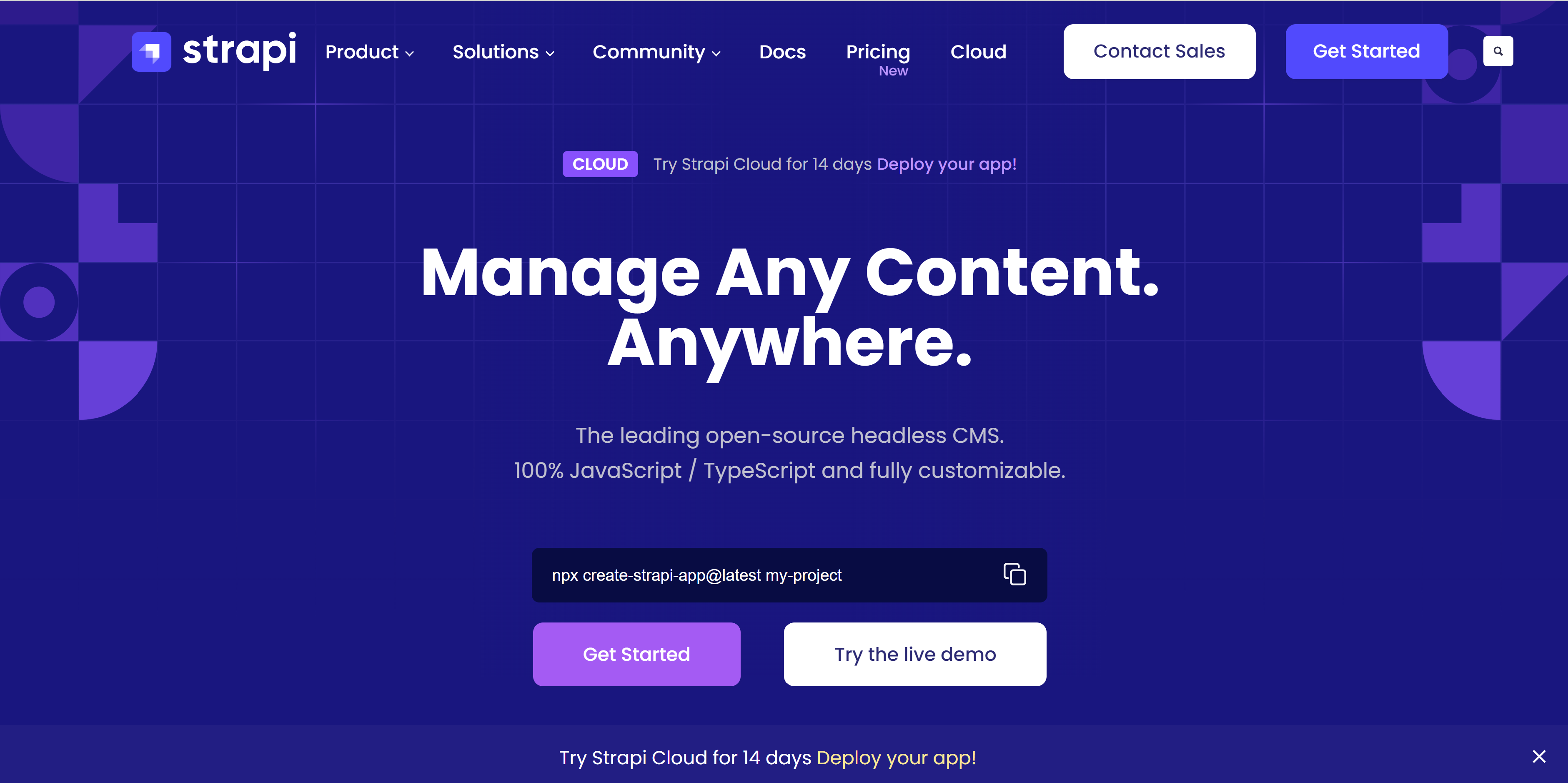
Strapi emerges as a standout open-source headless CMS, renowned for its high customizability and developer-friendly environment. It excels in creating tailored APIs and offers flexible content modeling, enabling businesses to craft content-rich experiences with ease.
The platform’s Node.js backend supports extensive customization, with a plugin system that simplifies the integration of functionalities like GraphQL, storage, and authentication. Strapi’s clean user interface, comprehensive documentation, and a vibrant ecosystem of plugins and tutorials contribute to its popularity among developers.
Pricing for Strapi varies based on the needs and scale of the project:
- Free
- Pro: $99/month per project
- Team: $499/month per project
- Custom: Contact for pricing
Strapi’s flexibility and ease of use ensure that businesses can manage content seamlessly across different platforms, making it a top choice for those seeking a responsive and tailored online presence.
3. Contentstack
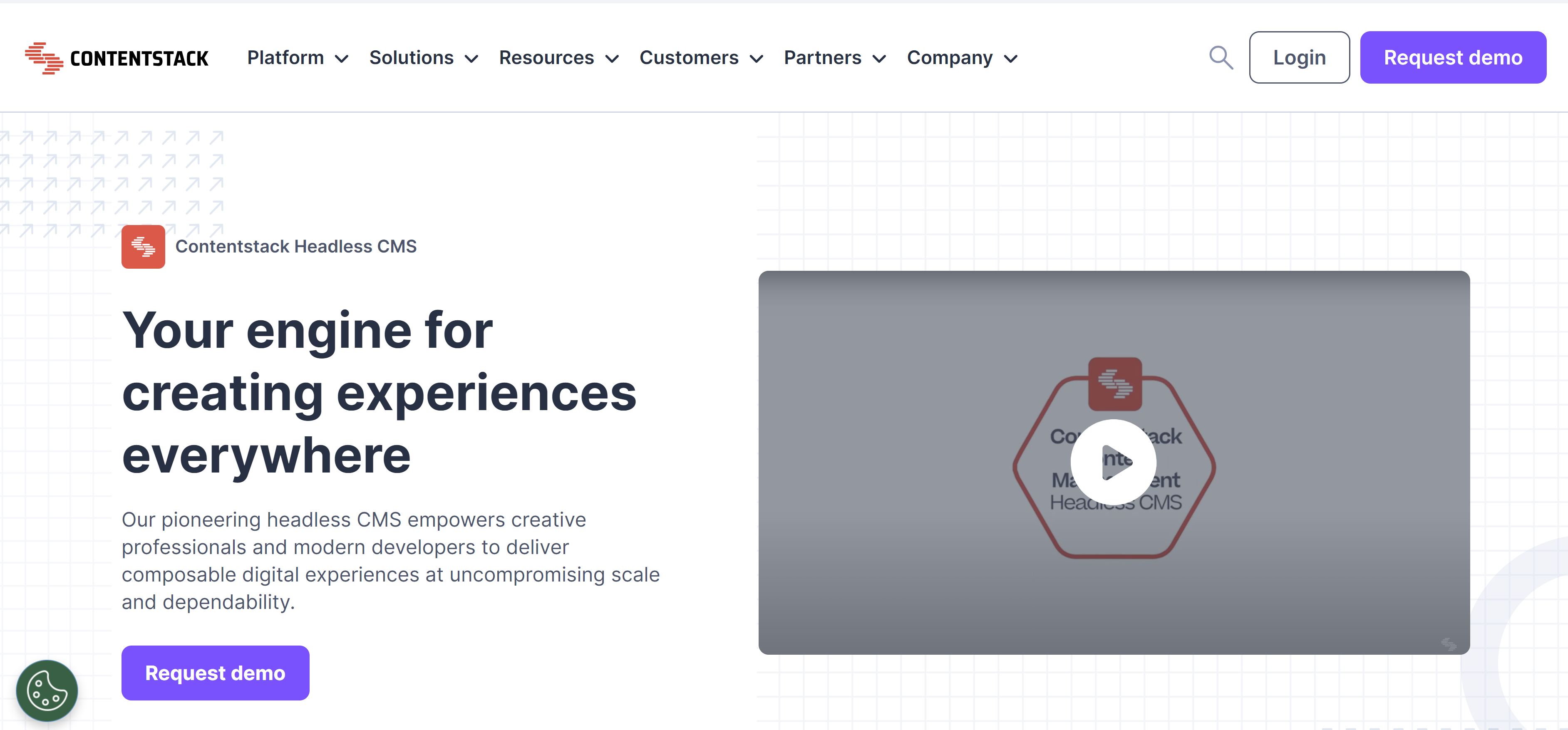
Contentstack stands out as a headless CMS platform tailored for enterprises, embracing complexity while maintaining agility for content management across various digital platforms. Its robust suite of features makes it a top choice for organizations seeking efficiency and flexibility.
Contentstack’s best features include:
- Content scheduling and repository capabilities for comprehensive management
- A vast array of RESTful APIs facilitating integration with numerous interfaces
- Advanced search functionalities for content and code within complex digital landscapes
- Customizability that caters to the needs of sophisticated development teams
However, Contentstack does have its limitations. The platform’s ‘blank slate’ approach, while beneficial for customization, can be daunting for smaller teams without the resources to fully leverage it. Additionally, the versioning system may pose challenges for real-time collaboration.
Pricing for Contentstack is not publicly listed and requires direct contact. This may indicate a tailored pricing structure to fit the specific needs of each enterprise.
Contentstack’s pricing tiers are as follows:
4. dotCMS
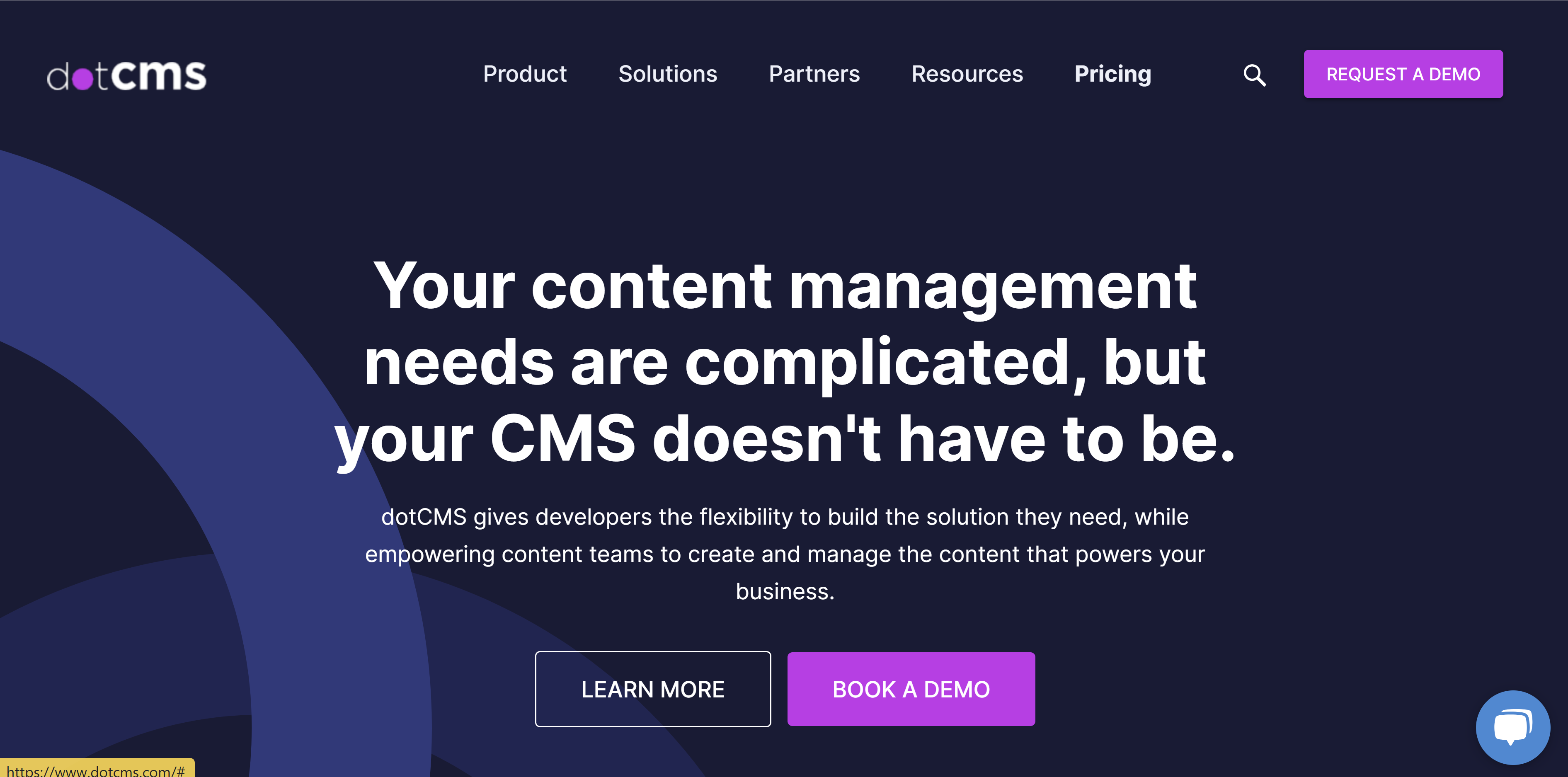
dotCMS stands out as a versatile headless CMS platform, catering to organizations that aim to publish content across multiple platforms. Its flexible workflows and robust editor empower content creators to tailor content to their specific needs, ensuring a personalized touch.
Best Features of dotCMS:
- On-premises hosting options for enhanced flexibility.
- Advanced content modelling with drag-and-drop editor features.
- Comprehensive onboarding system for integrating multiple CMSs.
- Streamlined content deployment without the need for developers.
However, users should be aware of certain limitations. The interface may not be the most intuitive, potentially leading to a steeper learning curve. Additionally, there have been reports of occasional system crashes that could disrupt content management activities.
dotCMS offers a free tier, making it accessible for businesses to start with. For more advanced needs, the Enterprise plan is available, but you’ll need to contact them for pricing.
5. Contentful

Contentful stands out as a headless CMS platform that excels in multi-channel content delivery and flexibility. Its API-first approach is a boon for developers, allowing for seamless integration and content distribution across various applications and devices. The platform’s intuitive interface empowers non-technical users to manage content with ease, making it a favorite for both developers and content creators.
Contentful’s robust feature set caters to large enterprises and digital agencies requiring a scalable content marketing platform. It is particularly beneficial for businesses that prioritize mobile strategy, efficient publishing workflows, and extensive customization options. The system’s search feature, diverse extensions, and dynamic visual design tools are just a few highlights that contribute to its popularity.
Contentful is highly regarded for its mobile optimization, content taxonomy, and the availability of a wide range of extensions, making it an amazing headless CMS with full-fledged customizability.
6. Kontent.ai
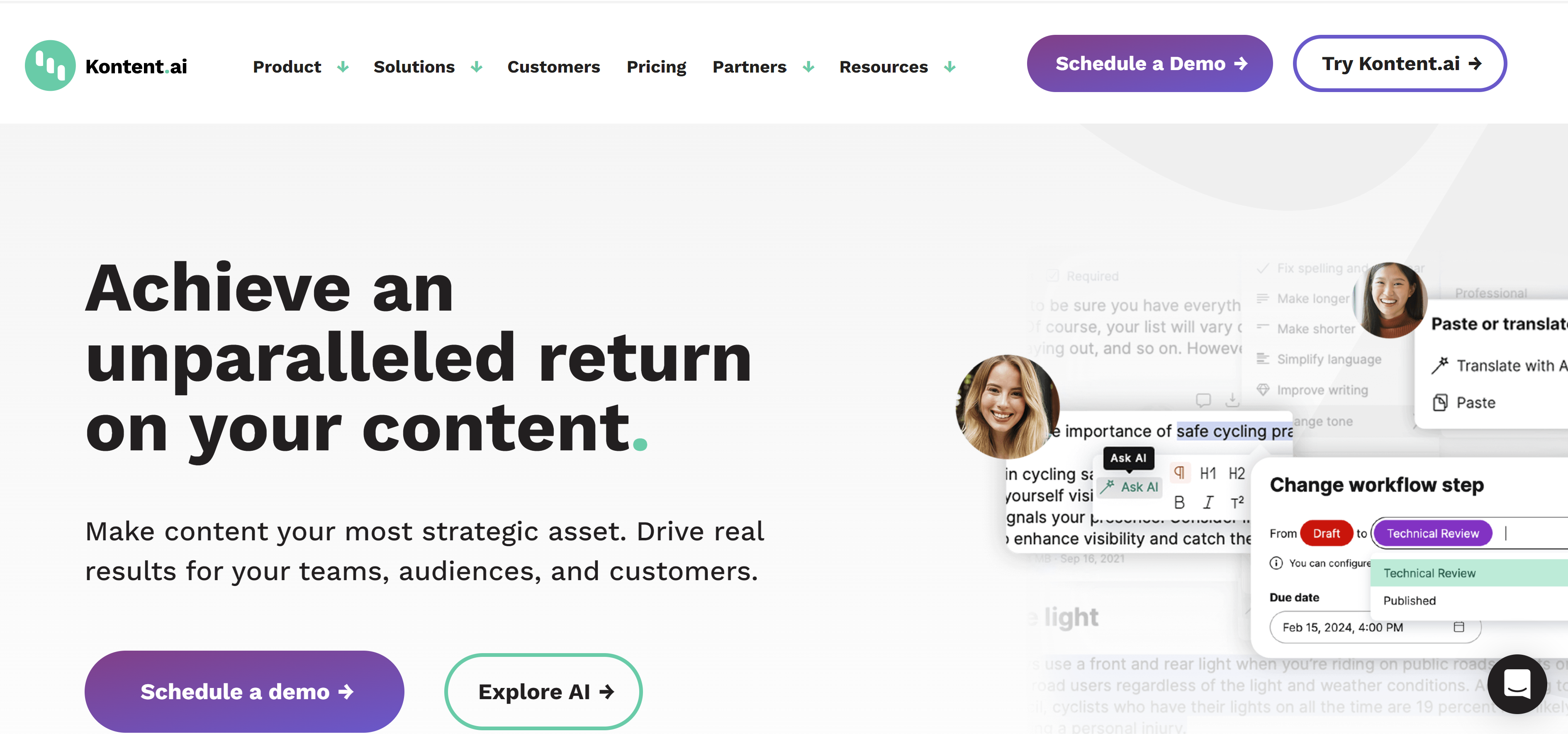
Kontent.ai stands out as a headless CMS that promises complete control over your content, catering to some of the world’s largest brands. Its omnichannel content delivery extends beyond multiple channels, reaching static site generators and various websites with ease. The platform’s Web Spotlight feature is particularly noteworthy, allowing authors to preview how content will appear across different channels.
Kontent.ai’s microservice architecture not only enhances performance but also ensures the platform remains faster and more efficient compared to many headless and traditional CMS options.
Despite its strengths, Kontent.ai does have limitations. Customizations may demand more development time, and the backend only supports English, which could be a hurdle for international businesses. However, its user-friendliness for small businesses and scalability for large enterprises make it a versatile choice.
Pricing:
- Developer: Free
- Scale: Contact for pricing
- Enterprise: Contact for pricing
7. Magnolia
The Swiss-based Magnolia is a veteran in the headless CMS arena, offering a robust platform that has evolved to meet the dynamic needs of modern businesses. Despite its age, Magnolia remains a competitive choice due to its agile solutions and ability to adapt to the changing digital landscape.
Magnolia’s best features include built-in workflows for efficient content management, comprehensive versioning for easy content tracking, and personalization options to tailor digital experiences. Additionally, it boasts pre-built integration modules that enhance its functionality with tools like Salesforce and Google Analytics.
However, Magnolia isn’t without its limitations. The platform’s visual editor is somewhat limited, which can pose challenges when adapting content for different platforms. Also, the process of uninstalling content modules could be more intuitive, potentially causing confusion among users.
When it comes to pricing, Magnolia offers an open-source CMS for free, which is a great starting point for many businesses. For more advanced needs, the self-hosted Digital Experience Platform (DXP) starts at $3,000 per month, with cloud DXP pricing available upon request.
Magnolia’s commitment to evolving alongside the digital market ensures that it remains a strong contender among headless CMS platforms, providing users with a reliable and scalable solution for their content management needs.
8. Bloomreach
Bloomreach is a robust platform that excels in enhancing the commerce experience through personalization and multi-channel publishing. It’s particularly beneficial for businesses focused on digital commerce growth, offering features like A/B testing and rich media management to deliver tailored content and recommendations.
The platform is designed for scalability, providing both cloud and on-premise deployment options. Bloomreach’s flexible pricing caters to a diverse range of clients, from startups to large enterprises.
Key features of Bloomreach include:
- Experience Manager for optimizing audience experiences
- Marketing automation for engaging conversations
- Responsive templates for cross-device compatibility
- Access to Bloomreach Academy for user education
Bloomreach’s comprehensive suite of products, including Engagement, Discovery, and Content, positions it as a first-rate choice for e-commerce merchants aiming to craft compelling online experiences.
However, users should be aware of potential limitations such as data overload and a complex implementation process. For detailed pricing information, interested parties are encouraged to contact Bloomreach directly.
9. Agility CMS
Agility CMS stands out as a platform that prides itself on speed, aiming to be the fastest headless CMS available. It’s designed to meet the demands of complex content operations with its high-speed website API and comprehensive page management. The ability to combine multiple pieces of content into a cohesive layout makes it a strong contender for businesses that require a nimble content delivery system.
Agility CMS shines with features like shared content capabilities and e-commerce integrations, which streamline the process of publishing across multiple channels and enhance online sales efforts.
However, users may encounter some limitations with Agility CMS. The search functionality is less robust, which can make retrieving older content a cumbersome task. Additionally, the platform expects a degree of self-sufficiency from its users, offering minimal guidance during file uploads.
Here’s a quick look at the pricing for Agility CMS:
| Plan | Price |
|---|---|
| Starter | $1,249/month |
| Pro | $2,499/month |
| Enterprise | Contact for pricing |
10. Butter CMS
Butter CMS is often celebrated as one of the best headless CMS platforms, particularly for those who prioritize user-friendliness and flexibility in their content management system. Its intuitive content modeling and ease of use stand out, enabling team members with various levels of technical skills to manage content with little to no hassle.
As a cloud-based platform, Butter CMS shines in web design and management across diverse business types, such as eCommerce, SaaS, and marketplaces. Its white-labeling capabilities are a significant advantage for businesses aiming to maintain brand consistency.
Butter CMS’s API-driven approach offers a backend for content management while allowing full freedom in designing the front-end. This makes it an excellent choice for integrating CMS functionalities into existing projects or starting anew with modern frameworks like Next.js.
While Butter CMS is an excellent option for many, it’s important to note that it may not be the ideal solution for highly complex projects that require extensive customizations or advanced content modeling. Additionally, the platform’s limited third-party integrations could be a constraint for those seeking a more flexible headless CMS.
Conclusion
As we’ve explored the top 10 best headless CMS platforms, it’s clear that the future of content management is dynamic and flexible. From the robust enterprise solutions like Contentstack to the developer-friendly environments of Sanity and Strapi, each platform offers unique features that cater to different needs. Whether you’re looking to streamline content delivery across multiple channels, integrate with other systems seamlessly, or simply manage content efficiently, there’s a headless CMS out there for you. As the digital landscape continues to evolve, these platforms will undoubtedly play a pivotal role in shaping how content is created, managed, and delivered, ensuring that businesses can keep up with the ever-changing demands of the digital world.
Frequently Asked Questions
What is a Headless CMS?
A headless CMS is a content management system designed to manage and deliver content without a front-end delivery layer. It provides content as data over APIs, allowing developers to use it with any front-end framework or device, offering flexibility and control over how and where content appears.
How does a headless CMS differ from a traditional CMS?
Unlike traditional CMS platforms, which couple content management with a specific presentation layer or template, a headless CMS separates the content repository from the front-end, allowing for content to be delivered to any channel or device via APIs, enhancing flexibility and multi-platform compatibility.
What are the benefits of using a headless CMS?
The benefits of using a headless CMS include flexibility in delivering content across multiple platforms, efficient content modeling and structured content for consistency, an API-first approach for easy integration, and the ability to create personalized experiences across various channels.
Can a headless CMS be used for enterprise-level projects?
Yes, many headless CMS platforms, such as Contentstack, are specifically designed to handle the complexity and scalability required by enterprise-level projects. They offer the agility and flexibility needed for managing content efficiently across all major digital platforms.
Are there free plans available for headless CMS platforms?
Some headless CMS platforms offer free plans for individual projects or small-scale use. For example, Contentful provides a free plan suitable for personal projects, with various paid plans starting at $300/month for team projects.
What are some alternative names for a headless CMS?
A headless CMS may also be referred to as a decoupled CMS, an open data platform, headless architecture, or a content application-programming interface (API). These terms all describe the separation of content management from the front-end presentation layer.



